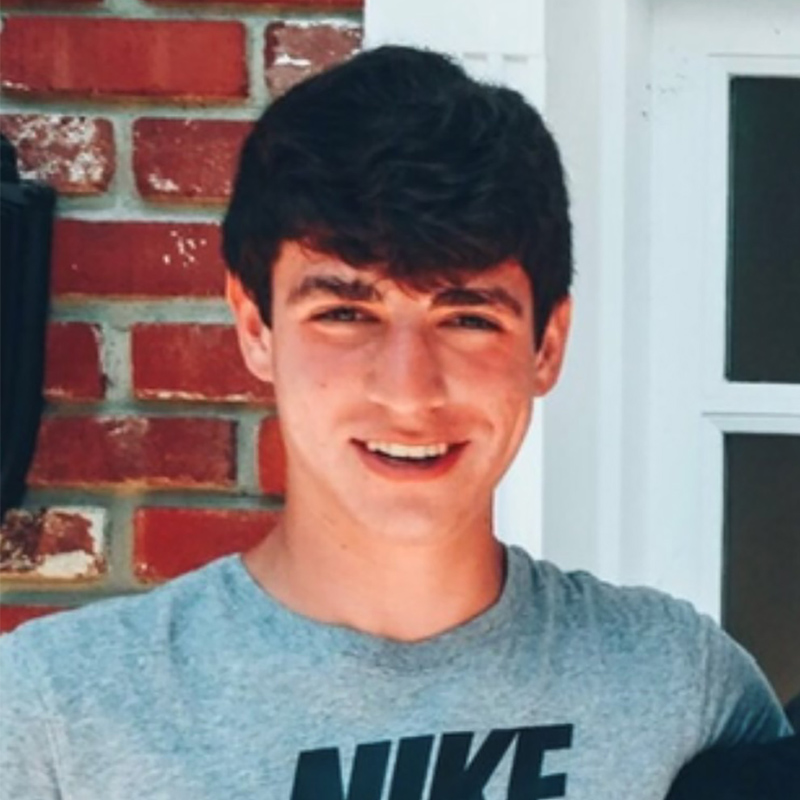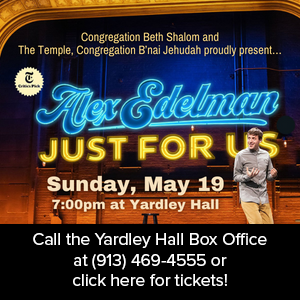Ben Mondry is the winner of the 2021 KC Lodge #184, B’nai Brith essay contest, which encompassed more than 50 area schools, churches, synagogues, and youth groups. The Blue Valley North graduating senior received $2,000 and will be attending the University of Kansas in the fall. His essay is below:
I was finishing my last batch of baked goods as the aroma of home-baked pastries filled the air. I retrieved the warm chocolate chip cookies from the oven and carefully packaged them into a container beside the muffins and brownies I had baked earlier. I neatly packed the load of home-baked goods into my mom’s minivan and set route for our synagogue.
Awaiting me was a large table and a colorful poster that read “Bake Sale.” Within an hour, all of the treats were sold. The first part of my bar mitzvah project was complete.
With the money, we bought dozens of $10 gift cards from stores in the area. Our next stop, Children’s Mercy Hospital. We donated the gift cards to sick children for Christmas.
It is easy to look up the definition of interfaith dialogue.
It refers to the “positive and cooperative interaction between people of different religions, faiths or spiritual beliefs with the aim of promoting understanding between different religions to increase acceptance and tolerance.” It is not a new concept, and it sounds fairly easy: to have a conversation with another person, to hear about his beliefs and his history seems like an opportunity that could only enhance your knowledge.
It sounds like this concept is the key to promoting peace within not only our personal community, but worldwide. And, you can’t just stop at interfaith dialogue. Interracial dialogue fits in the same category.
What is the problem? Why is this so hard to accomplish?
As history shows us, the lack of this dialogue is what continues to fuel so many problems today, causing religious and racial unrest.
We must recognize that this does not happen with one conversation. This is a process. A process that continues to last over time, to be achieved by open-minded communication with the objective of achieving knowledge and compassion and understanding.
How can this happen with one conversation? It cannot. It begins with a conversation. That conversation grows into learning. Learning can be looked at like a seed. It starts out small. Sometimes as small as a dialogue. But then it grows. It becomes knowledge which turns into plans and then finally actions.
Long ago, Rabbi Tarfon and Rabbi Akiva debated. They were studying Torah when the question was posed, “Which is greater, learning or action? Rabbi Tarfon asserted, “Action is greater.” Rabbi Akiva disagreed: “Learning is the more important of these two, because learning leads to action.”
Is Rabbi Akiva suggesting that actions might be as small as visiting another person’s home or their place of worship? In doing this, a possibility opens of finding similarities.
One of Judaism’s important commandments, “hachnasat orhim” (bringing in guests), teaches the importance of welcoming strangers and visitors.
In the Torah, there are three guests who arrived at Abraham and Sarah’s doorstep. Immediately Abraham and Sarah sprang into actions. They brought water so that their guests could wash their feet (they were in the desert, after all) and invited them to recline under a shady tree. They selected a sheep from their flock and prepared a great feast. They opened their home and their hearts to the strangers, who were very soon, not strangers anymore.
It is hard to imagine this happening in this day.
I attribute this to fear of opening your mind, your heart, and even your mouth. We all know that any type of encounter comes with risk, not always negative, but still a risk. And, that risk sparks fear and insecurities. By taking a risk, and opening your mind, your heart, and your mouth, you can learn that the differences in each other can enrich our lives more than you could have imagined.
When I was younger, my family seemed to talk about mitzvahs all the time: doing Mitzvah Day at our synagogue, or attending a bar or bat mitzvah, or doing something as small as unloading the dishwasher for my parents.
We always heard the phrase, to do a mitzvah. As I have gotten older and became a bar mitzvah, became an Eagle Scout and now (graduated from high school) the meaning is deeply implanted in me.
Near the middle of the third book of the Torah, Bayikra, we find out what may be the most important mitzvah of them all: “v’ahavta l’reacha kamocha,” or “love your neighbor as yourself.” The Golden Rule.
In a story told there, a Roman soldier approached Rabbi Hillel and said, “I will convert to Judaism, if you can teach me the entire Torah while I stand on one foot,” Hillel replied, “What is hateful to yourself, do not do to your neighbor. That is the whole Torah; the rest is commentary. Now go and learn.”
About the Golden Rule, the first time I had ever heard of it came from the classic collection of children’s stories, The Berenstain Bears. My mom must have read that particular one to me at least 200 times!
But the purpose of that story and so many more lies in the concept of accepting others, not be afraid of their differences, but to learn from their differences so we can unite. And, to always treat others like you want to be treated.
As I reflect on the way our life was a little over a year ago, how could we ever have imagined that we were on the brink of a pandemic.
I remember leaving school for Spring Break, never in my wildest dreams thinking that it would be the last day I would step foot in the school for the rest of the year. My gym locker still had my basketball shoes in it and my favorite sweatshirt was in my regular locker (along with some snacks that did not fare well.)
Nobody could have predicted what was about to happen. How our lives were suddenly halted with little warning.
Here we are, a little over a year later and we are still in the midst of it. Fortunately, vaccines are on the rise, schools are beginning to reopen, and some sort of normalcy seems to slowly be returning.
How different is this pandemic from the pandemic of hatred and ignorance? The pandemic of racism, anti-Semitism and other inequalities also spreads quickly. The fear and insecurity of acknowledging other people’s differences can spread like COVID-19. Quickly.
How can we stop it? There can never be a vaccine for this pandemic.
In the 1960’s, the Jewish people stood with the Rev. Martin Luther King Jr. and other leaders of the civil rights movement because as a Jewish people, we understood what it was like to be enslaved and beaten down and even exterminated just because of how we were born. We also knew then, like we know now, that being part of a community makes us stronger together.
Almost 53 years ago, King was assassinated for advancing the cause of civil rights within this country. What he spoke about was frightening to many. Why? Because it was unfamiliar and different.
So, how is this different from interfaith dialogue? It is not. It shows the necessity for interracial dialogue. We stood together back in the 1960’s and we stood together as recently as May 26, 2020 because of what happened to George Floyd.
It has been 60 years and the same battle is still being fought. Today, our need for interfaith dialogue and interracial dialogue goes hand in hand. Recognizing our unique perspectives, our unique qualities is imperative for creating a world that is strong and peaceful.
At the time of my bake sale, it didn’t matter that my bar mitzvah project benefited Christians. I just wanted to help the kids have a better holiday. In King’s words, “injustice anywhere is a threat to justice everywhere. We are caught in an inescapable network of mutuality. Tied in a single garment of destiny. Whatever affects one directly, affects all indirectly.”
Because we are all affected, it is up to each of us to act. Each time we get involved with an interfaith dialogue or interracial dialogue, we are doing our part to repair the world, tikkun olam.
To do this, we must equip ourselves with basic tools.
In Judaism, I believe the following concepts are crucial for these dialogues to occur. The first is “K’vod Habriyot”: respect for all people. The second is “Derech Eretz”: the way of the land, behaving appropriately among others. And, finally, “Klal Yisrael”: one big family, our Jewish community.
With these tools, and the willingness to have a conversation, to plant that seed of knowledge, we can begin our part in accepting and appreciating each of our differences.
Rabbi Baruch of Medziboz once said, “The world needs every single human being.” I couldn’t agree more
The scholarship fund is a result of a bequest from Bernard A. Margolis — one of 40 funds that he established at his death. He charged his B’nai Brith lodge to supervise the scholarship competition for seniors graduating from a Kansas City-area high school. KC Lodge #184 has enlisted the Jewish Community Foundation to invest the fund and handle administrative details. During the last 20 years, the scholarship fund has grown from $50,000 to $60,000. The 2022 competition will be open through June 1, 2022.




